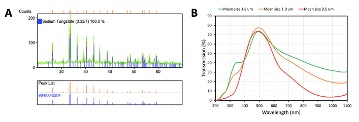Solar Control Materials
Continuous Aerosol Based Synthesis for Tungsten Bronze Particles
Scalable, Rapid, and Tunable Production of Crystalline Particles
Tungsten bronze particles are unique particles that block and absorb both near-infrared (NIR) and ultraviolet light (UV). Because of these unique characteristics, these particles are extremely useful, and incorporated in various glass applications, limiting heat transfer. Unfortunately, synthesis of these particles with current methods is difficult, requiring large amount of precursor solutions, a significant amount of time for a minimal particle yield, and the size is not tunable, limiting the absorption and blocking of NIR and UV light. Thus, there is a significant need for a method that allows simple and rapid synthesis of tungsten bronze particles with tunable sizes.
The technology
Researchers at Virginia Commonwealth University (VCU) have developed a novel aerosol based method of producing tungsten bronze particles. The aerosol based technique developed at VCU utilizes a high temperature and high throughput approach to create tunable size crystalline tungsten bronze nanoparticles in a one step, scalable process that spans a matter of seconds as seen in the figure below. Moreover, the method yields high purity tungsten bronze particles with no other byproducts, reducing overall waste. This method utilizes simplistic non-toxic precursor materials that can be manipulated allowing the chemical structure of the tungsten bronze particles to be varied. Overall, the synthesis methodology described here opens the door for the next generation of solar control transparent materials promising reduced costs, high yields, tunable particle sizes, and rapid and continuous synthesis of tungsten bronze particles for the shielding of NIR and UV light.

Figure 1. (A) X-ray diffraction of synthesized sodium tungstate particles compared to a known standard. (B) UV-VIS of synthesized sodium tungsten bronze particles showing absorption differences based on particle size.
